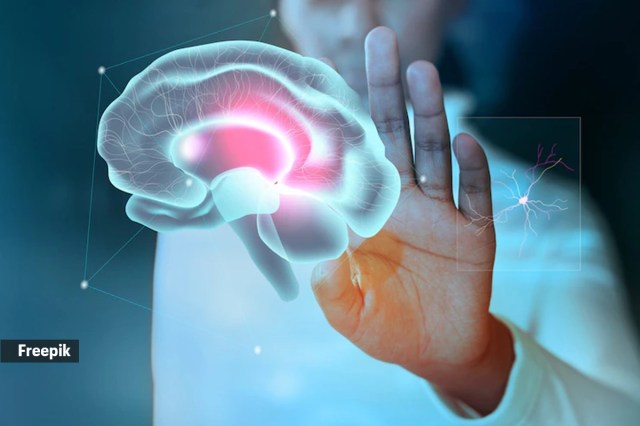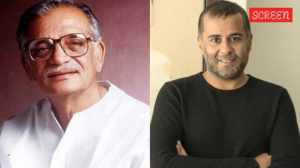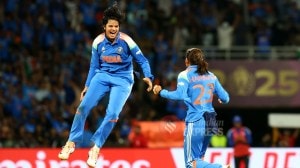Brain strokes could kill 10 million people a year by 2050 — an increase of 50 per cent in 30 years — and lead to a loss of $2.3 trillion, according to a new Lancet Commission report. More than half of these would be a result of brain bleeds and not clots in this predictive scenario, bringing to fore the importance of controlling lifestyle factors such as hypertension and smoking.
India recorded the highest number of strokes among countries from the Southeast Asian region, with nearly 1.3 million people getting it every year and 9.6 million people living with the consequences, according to one of the reports in the series. It said anywhere between 18 and 42 per cent of the people who get strokes die within a month.

Uncontrolled hypertension at younger ages (responsible for 30 per cent cases in India), lack of acute stroke care facilities and paucity of rehabilitation centres are the key reasons behind the increase in deaths and disability linked to strokes. Besides, there is low awareness about strokes, says Dr MM Mehndiratta, one of the Indian authors of the Lancet report and head of the stroke team at Dr BL Kapur Hospital.
Story continues below this ad
How can you prevent death or mortality due to stroke?
The first and most important step is to prevent the stroke itself. Just like the heart, a build-up of plaque in the brain can block the vessels and lead to a stroke. While factors like aging cannot be prevented, the three key factors such as high blood pressure, diabetes, and high cholesterol levels can be kept in check. Eating healthy and exercising regularly to prevent obesity is a preventive too.
The second most important intervention is realising that you are having a stroke and reaching a hospital on time. Dr Mehndiratta says that it is essential that stroke patients reach a “big hospital” within 4.5 hours, the earlier the better. “What usually happens is people think that they must have slept wrong leading to the numbness in their arms. Many ignore the symptoms for several hours before realising that they need medical care,” he adds. For strokes caused by clots being stuck in narrowed vessels, doctors can either give a medicine to dissolve the clot or do a procedure to extract it. For strokes caused by bleeding, doctors have to quickly stop it.
While cost of treatment and access to it may be a challenge in many parts of the country, even in facilities where treatment is available free, the window of opportunity is often missed.
What are signs and symptoms?
Story continues below this ad
Dr Mehndiratta asks people to follow the FAST acronym — facial drooping, arm weakness, speech difficulties, and timely health seeking. Usually, people who are having a stroke will not be able to control one side of their face and if they smile it will be uneven. They may also experience weakness of one of the arms and will not be able to keep it up. And, they are likely to start slurring their speech. “If people notice any of these symptoms, they should rush to the hospital. Although awareness is increasing in bigger cities like Delhi, we need to communicate this to more people so that these lives can be saved,” he said.
Other conditions like sickle cell disease and anaemia may also lead to strokes and these underlying conditions should be diagnosed and treated adequately, he said.
What are the risk factors for a stroke?
Globally, more than half of the stroke-related deaths would be a result of brain bleeds and not clots, bringing to the fore the importance of controlling lifestyle factors such as hypertension, diabetes, obesity, cholesterol levels and smoking. In the Southeast Asia region, “young strokes” in people below the age of 45 years were found to be more common again because of more people living with these lifestyle disorders.
Hypertension was a risk factor for 30 per cent of the stroke cases in India, while ambient air pollution was a risk factor for 25.5 per cent cases, according to one of the studies in the series.
Story continues below this ad
However, the study also pointed to various “unique” mechanisms for strokes in many Southeast Asian countries. This included strokes as a result of infections like scrub typhus, malaria, and dengue. With a high burden of tuberculosis, the paper said blood clot related strokes can happen in 15-60 per cent of brain TB. Some unusual risk factors included snake bites and scorpion sting, especially Indian Red scorpion sting, and squatting toilets. Nearly half the strokes in India happened in the early morning hours, with a third being reported while in the toilet.
Who is at a higher risk of strokes?
The report says that while stroke deaths in people over the age of 60 years is likely to go down by 36 per cent, the dip would be lower for younger age groups. Among those under 60 years, it is predicted to fall by less than 25 per cent from 13 per 100,000 to 10 per 100,000. The younger fatalities will largely be because of increasing levels of diabetes and obesity in that age group.

































